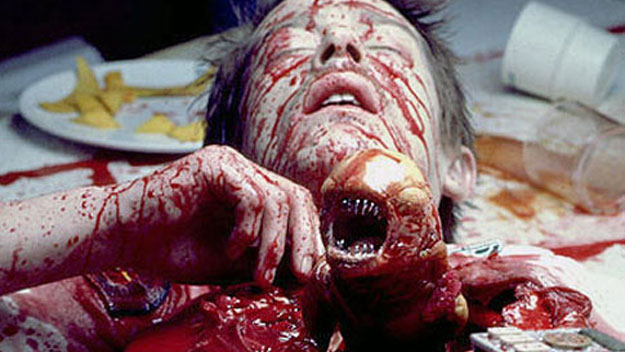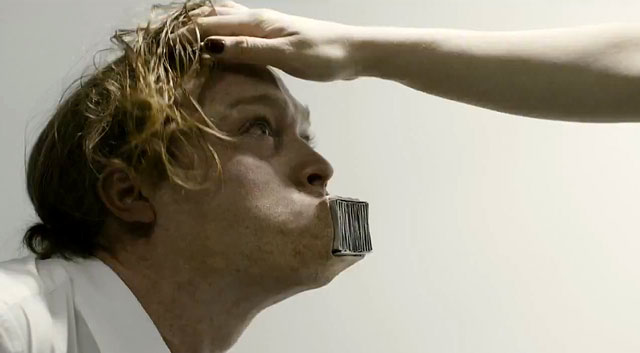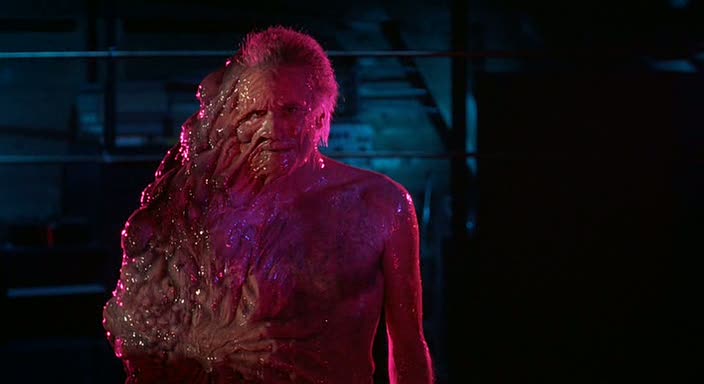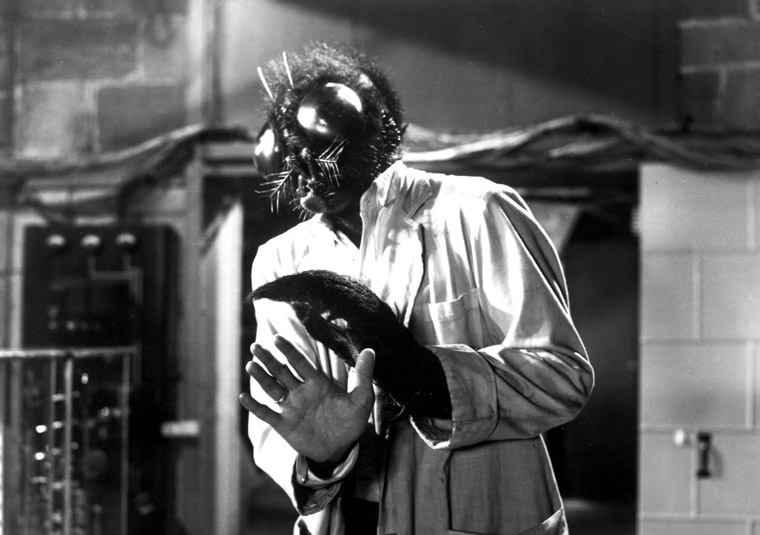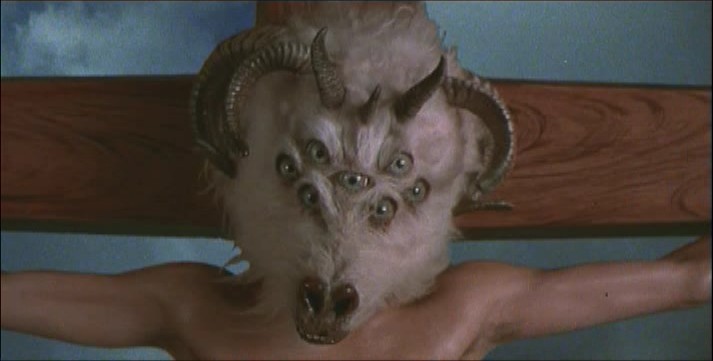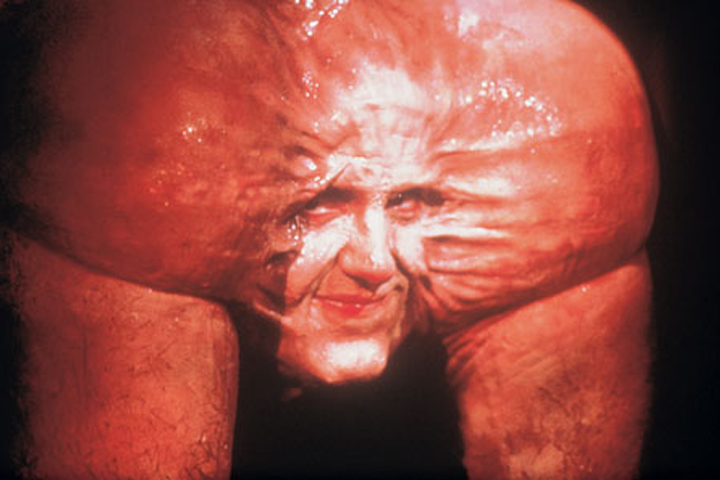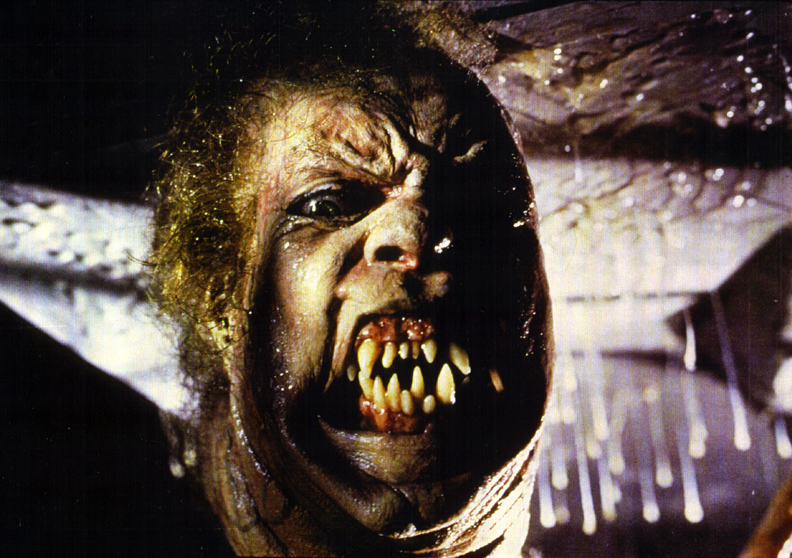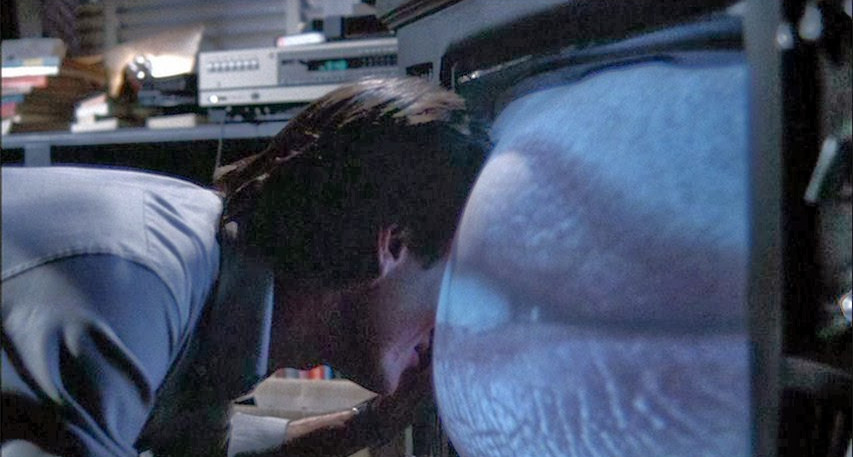10. Under The Skin (2014)
The most recent entry on the list, and genuinely one of the strangest films of recent years. Scarlett Johansson stars as a nameless extra-terrestrial who drives around Glasgow in a white van, seducing and luring men towards a truly ghastly demise – a somewhat art-house rendering of the 90s erotic sci-fi thriller, ‘Species’.
Under The Skin is surely not the goriest or visually abhorrent film on the list (save for two absolutely riveting sequences that simply cannot be divulged), but that is not its goal – instead the approach here is in exploring the discomfort that people face with their own physical form, a classic ‘body-horror’ motif. See as the alien becomes increasingly attentive of her human structure and struggles to comprehend her relocation into a foreign body – it somewhat reflects the difficulty that people can face when they realise that their bodies sometimes betray them…
9. Alien (1979)
Although with it more often being rightly credited as a landmark in science-fiction, or the gothic horror/haunted house in space sub-genre – it is easy to forget the massive ‘body-horror’ connections that this classic carries. A futuristic space freighter is breached by an alien life-form which gestates inside of one of the crew’s bodies before literally ‘bursting’ out and killing off the remaining members of the ship.
Despite being only one part of the premise, the concept of something foreign (like a parasite, or in this case an embryo) violating your body, infecting you and effectively killing you is an unsettling thought. The infamous, seemingly calm-after-the-storm dinner/chest-bursting sequence is a devastating and equally horrific science-fiction translation of this innately human fear.
8. Antiviral (2012)
Carrying the torch from his father, Brandon Cronenberg’s debut is a disturbing and often repellent (sound familiar?) take on the idol worshipping and obsession with celebrity culture of the present. Set in a near-future, people can now buy virus cells that have been taken from ill celebrities and inject them into their own bodies to gain a sense of perverse intimacy with their personal figures of desire.
Antiviral tackles its subject matter solidly, capturing the rather depressing notion of people literally obsessing over a person simply because they are famous almost too well – and then, physicalizing it with an idea that is truly grotesque. At times, Antiviral feels a little too clinical and even a tad overlong – but overall this is a brilliantly original direction into the modern wave of ‘body-horror’.
7. From Beyond (1986)
Stuart Gordon’s second foray into the works of H.P. Lovecraft, and an exploration into a determinedly different angle of ‘body-horror’ after ‘Re-Animator’. Gordon regulars Jeffrey Combs and Barbara Crampton return to have their perceptions significantly altered after an experiment to stimulate the Pineal gland reveals strange creatures that have been amongst us all along.
The sensory overloads eventually lead to some extraordinarily absurd bodily deformations – such as the Pineal gland exploding out of foreheads and Dr. Pretorius’ slimy, shape-shifting antics. The film is visually dazzling – not just for the trippy effects, but for the fluorescently ultraviolet colour-scheme when the ‘Resonator’ is switched on.
Carolyn Purdy-Gordon, Stuart Gordon’s wife, who features in many of his works (including this one) described From Beyond as “a film for people who like to look at their handkerchiefs after blowing their nose” – quite an applicable summary.
6. Body Melt (1993)
This little known Australian horror-comedy is the only inclusion from the 90s that features on the list – giving an indication of how ‘body-horror’ had faded from popularity during this time before its mini-revival in the late 00s.
The residents of a small suburban cul-de-sac are infected with a virus after taking a free experimental pharmaceutical drug they received in the mail. Needless to say, the drug causes hallucinations and later horrific mutations including: radically swollen tongues, exploding heads, killer placentas and copious slime vomiting among other pleasantries. By and large, Bodymelt is essentially a parody of spic-and-span living in the suburbs represented in certain soap operas (“Neighbours, With Tentacles”) – certainly an individual approach to ‘body-horror’.
This is an utterly revolting and simultaneously hilarious film – in the same vein as Peter Jackson’s earliest works, ‘Bad Taste’ and ‘Braindead’ but still considerably unique. It also packs a fantastically crude electronic score which simply tops off the utter zaniness of the visuals. Bodymelt is great nonsensical fun and truly occupies a world unto itself – a film in dire need of rediscovery.
5. The Fly (1958)
A classic 50s monster movie which, although going on sheer emotional and visceral impact and the ability to horrify and nauseate, Cronenberg’s 1986 remake still beats it hands down. Even so, this is a movie which time is still most definitely being kind to. Essentially, this is another which falls into the ‘warning-to-not-meddle-with-what-man-does-not-fully-understand-premise’ as it concerns a scientist whose molecules are fused with that of a housefly during an experiment.
The Fly is an excellent film and arguably one of the first that could be termed a ‘body-horror’. The classic ‘prism-eye’ shot capturing Patricia Owens’ look of terror, and the “Help Me” finale will remain immortal in monster-movie lore.
Cronenberg admittedly approached the remake as a metaphor for the aging process; a suitable inclusion that will be left off this list for the purpose of variety and including this entry.
4. Altered States (1980)
Ken Russell’s films are often visually striking, no less so in this mesmerizing, eye-popping and influential sci-fi horror; Altered States is the cinematic equivalent of a fever dream. A university professor conducts psychological experiments by locking himself in an isolation tank for extended periods and taking hallucinogenic drugs.
The experiments causes his body to violently contort and later regress into a radically devolved state, in one instance – a Werewolf-like Neanderthal of which sequence seems like it was lifted from a different film entirely! The final twenty minutes however are absolutely beyond anything what could have been foreseen by first time audiences as the professor changes into an amorphous mass of consciousness – seeing is believing!
3. Society (1989)
Bill Whitney has it all: rich parents, high school popularity, a cheerleader girlfriend – but still he feels that he does not ‘fit in’. Why are they rumours of his family and friendstaking part in huge orgies together, and why are his parents fascinated by slugs?…
It is no original idea of being paranoid concerning the behind-closed-doors activities of the rich and famous – but beneath Society’s slimy surface is a sophisticated and bizarrely unique shocker that gives David Icke’s whole ‘Lizardmen’ theory a completely new spin.
The film’s queasy tone whichis generated by some absurdly disorientating visuals and its slyly odd humour does nothing to prepare for one of the genre’s most shockingly disgusting and classic ‘body-horror’ climaxes… “The thrill of the hunt, and the smell of the shunt”.
2. The Thing (1982)
The Thing is arguably John Carpenter’s greatest film and certainly one of the very best examples of the ‘body-horror’ sub-genre. This now-classic focuses on a team of scientific researchers based in Antarctica whose camp is infiltrated by a faceless alien entity which assimilates its victims and then imitates them perfectly.
Eschewing the ‘vegetable man creature’ of the 1951 original, ‘The Thing From Another World’, Carpenter’s version goes for wild, gooey and horrifying special effects courtesy of Rob Bottin and an uncredited Stan Winston which wholly tops off the almost tangible suspense in graphically detailed glory. It also successfully emulates John W. Campbell’s ‘Who Goes There?’, the original source material which the 1951 version only scratched the surface of.
Due to its subject matter coinciding with the era of which it was made, the premise has often been interpreted as an allegory for Communism, the Reagan Administration, the spread of venereal diseases (namely AIDs) and even, to some extent, illegal immigration. Carpenter himself on the DVD commentary speaks of the eeriness of the film’s similarity to the AIDs pandemic which was emerging at the time of film’s release. Claustrophobic, nightmarish and intelligent – The Thing is a perfect horror movie.
1. Videodrome (1982)
And finally, an example from one of the proclaimed masters of the ‘body-horror’ sub-genre – David Cronenberg. Any number of his early films could have easily been explored on this list; for example, ‘Shivers’ or ‘Rabid’ both took on venereal diseases and sexual hysteria whereas ‘The Brood’ took on the maternal power overitsprogeny. In an attempt to represent a different approach to the sub-genre (and because it is one of his most accomplished films), Videodrome is the Cronenberg film of choice.
When a licentious cable programmer Max Wren (James Woods) happens across a sadomasochistic TV channel, it starts to have an elaborate effect on his personality, his body and inspires some wonderfully demented hallucinations too. This then leads to some genuinely horrific mutations including: the fleshy TV screen, the gun-fused hand and the infamously disturbing (as much as it is visually perplexing) vagina/cassette slot in Max’s chest.
With Videodrome, Cronenberg displayed that he was way ahead of the curve in suggesting how integral technology was becoming a part of the culture (see today) by literally physicalizing the concept on screen. The film also touched upon the theory of media images supposedly having a detrimental psychological effect on the spectators, by again, physicalizing the concept. I.e. – Nicki Brand (Deborah Harry) stubbing a cigarette out on her chest, or any one of Max’s grotesque transformations brought on by watching ‘Videodrome’ the show.
Cronenberg would return to similar themes with his underappreciated 1999 effort, ‘eXistenZ’, but without recapturing the originality or sense of ugly pervasion/perversion which Videodrome had in spades. A terrific film, and along with ‘The Thing’ one of the ultimate experience in ‘body-horror’. “Long live the new flesh”.
Author Bio: Liam Hathaway has a lifelong passion of watching and reading about any/every sort of film which has lead him to be a Film Studies student at Sheffield Hallam University. His favourite directors at the moment are John Carpenter, Ben Wheatley, Werner Herzog and Martin Scorsese.

